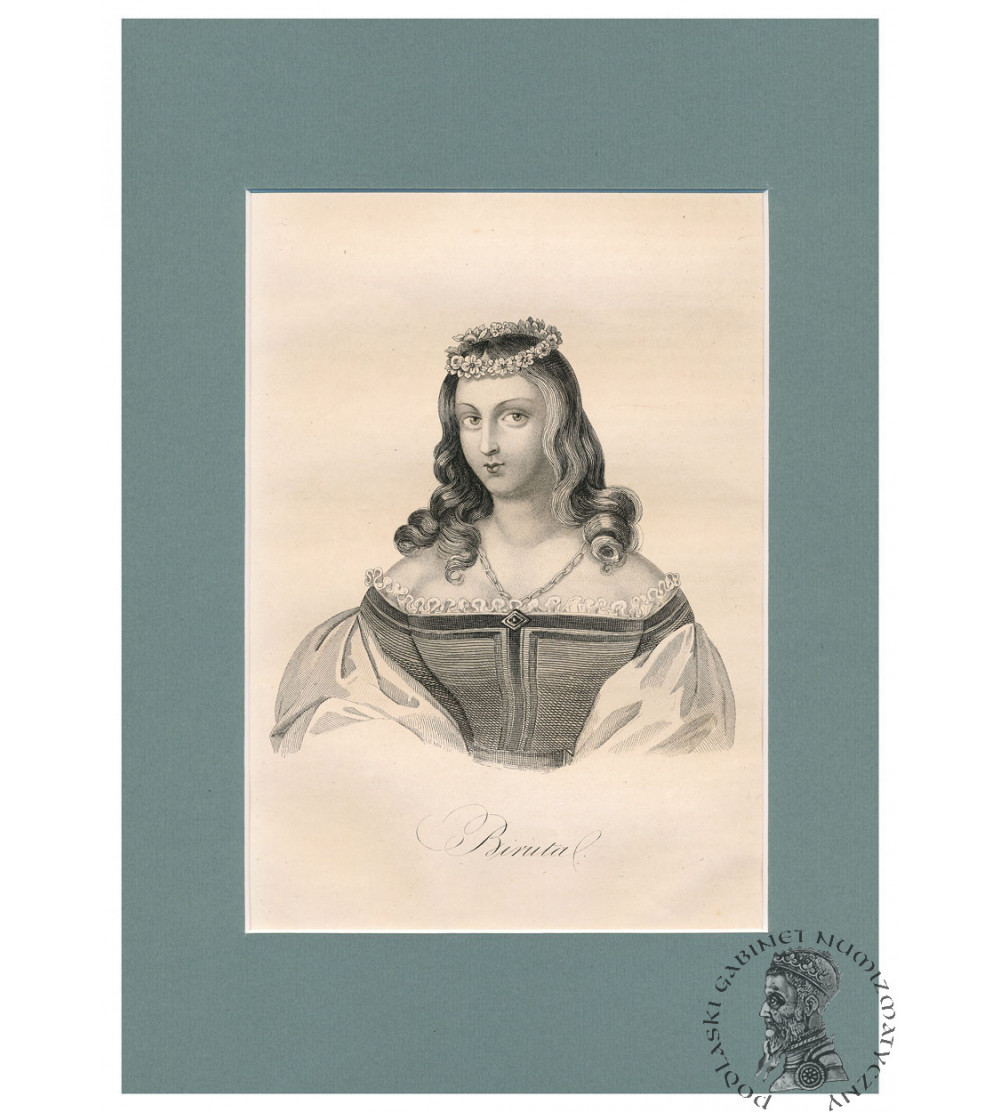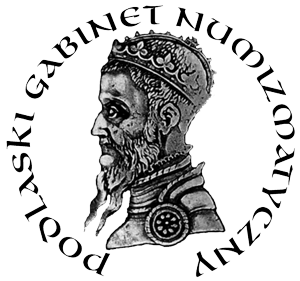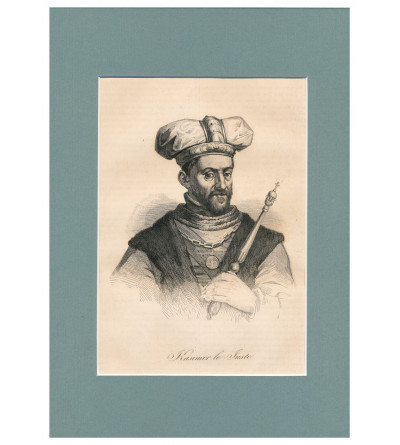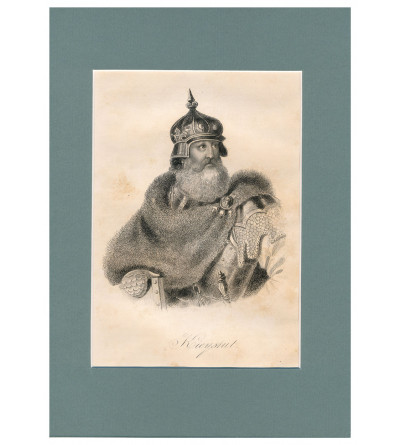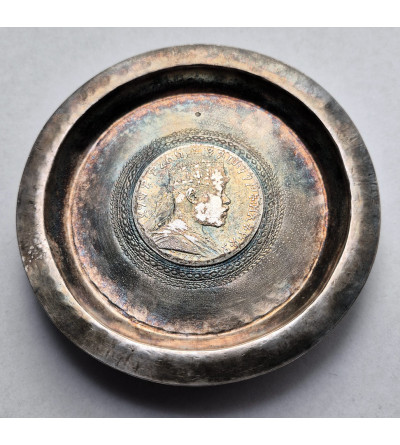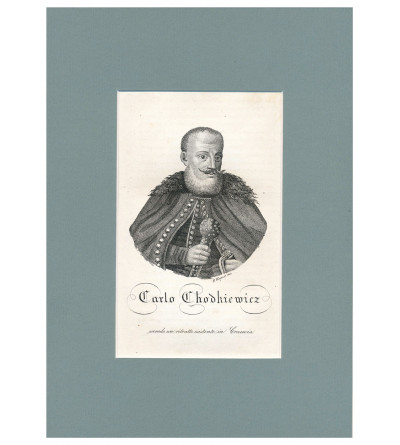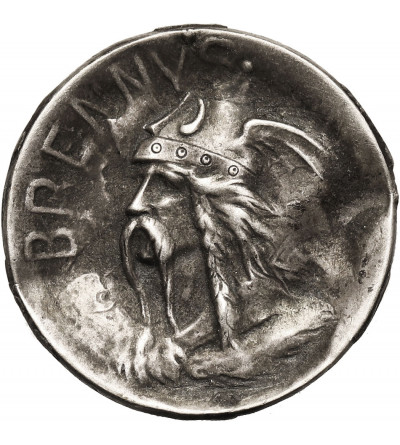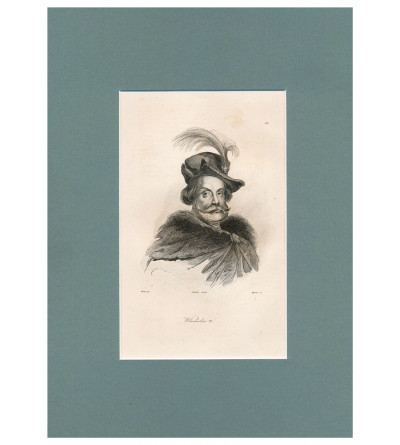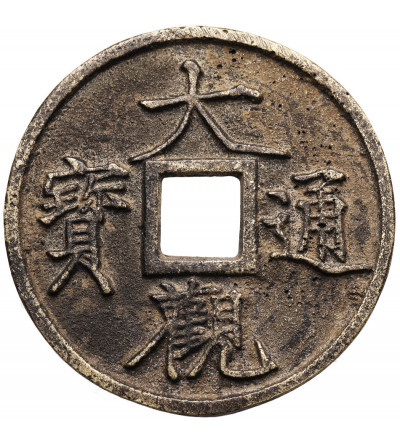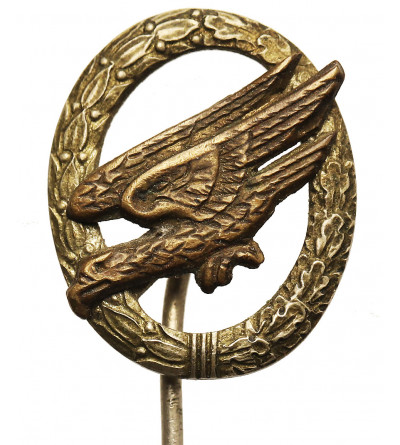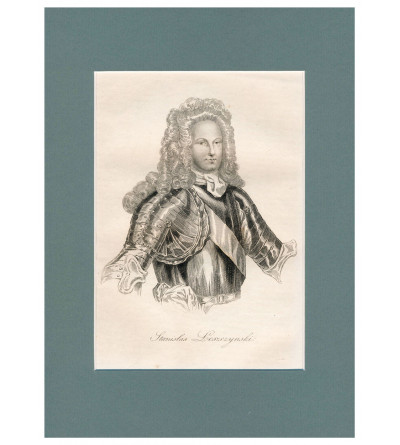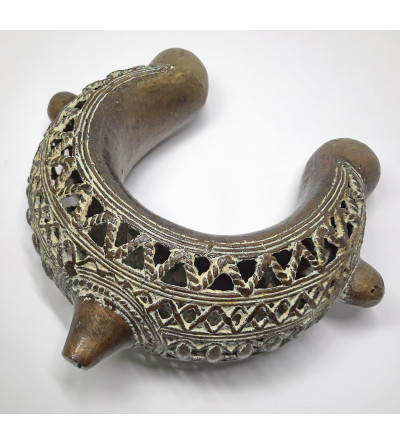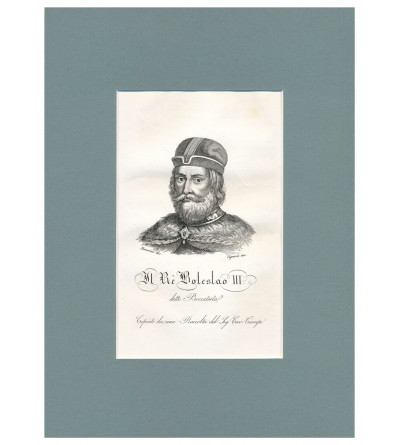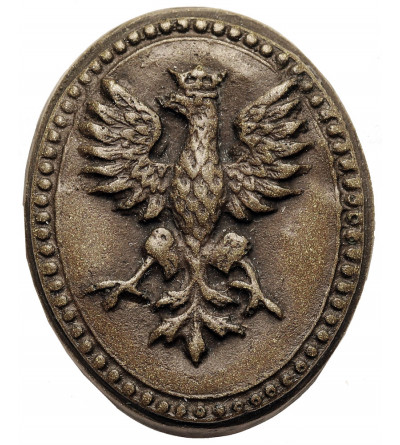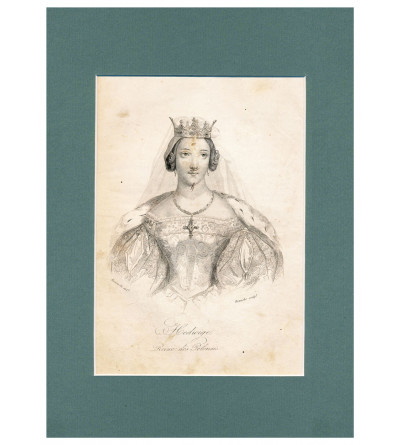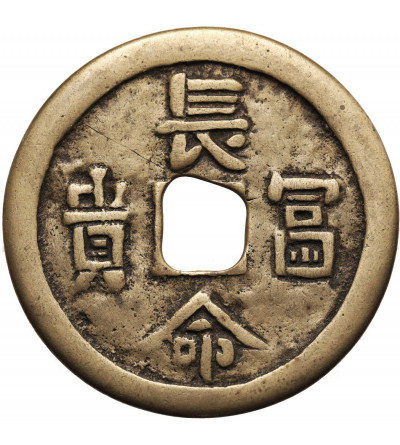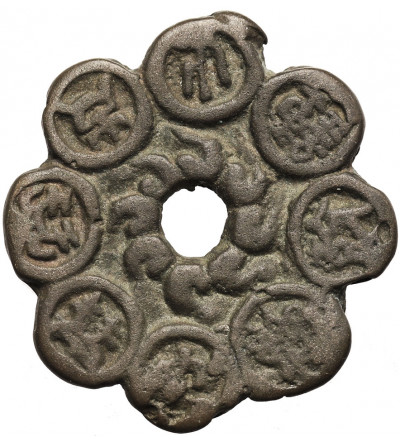Biruta, Lithuanian: Birutė (d. August 1382) - wife of Grand Duke Kiejstut and mother of his children, including Vytautas (Grand Duke of Lithuania in 1401-1430). Little is known about her life, and many legends have grown up around it. She may have been a priestess (vaidilutė) of Praurima in Palanga, guarding the sacred fire. Kiejstut, infatuated with her, was said to have kidnapped her when she refused to marry him, motivating this by sacrificing herself to the deities. The marriage was concluded in 1342-1344, and Biruta bestowed her husband with numerous offspring. In 1382 she was imprisoned with Kiejstut and son Vytautas, and drowned later that year. Kiejstut and Biruta's children were Wojdat Iwan, Butawd Henryk, NN (daughter), Witold, Towciwiłł Konrad, Danuta Anna, Mikłowsa Maria, Zygmunt Kiejstutowicz, Ryngałła Anna. Source: wikipedia.org
CHODŹKO, Leonard Borejko (1800-1871), La Pologne historique, litteraire et monumentale, (...), 1835-1842. A monumental work by the famous Polish émigré publisher Leonard Chodźko which is a history and geographic-political description of Poland. The work was published in three volumes. The first part is the history of Poland from the earliest times to the reign of Wladyslaw Lokietek. The second volume covers the history of Poland from the reign of Casimir the Great to the death of Stefan Batory, while the last volume covers the history of Poland from the beginning of the reign of Sigismund III Vasa until the events contemporary to the Author and the Readers, i.e. the November Uprising. Each part also contains descriptions of unique and interesting places in Poland, as well as basic information about literature, art and science. In addition, the work contains examples of exceptional monuments in the Polish lands. An important part of the work includes fairy tales, legends and short stories, as well as an essay on dramatic theater in Poland. The work also contains a description of Polish dances, such as the polonaise, mazurka, and krakowiak. The work is very richly illustrated, with numerous intaglios, natural monuments, sacred objects, castles, palaces, cities, portraits of important historical figures from the history of Poland, works of art, notes of songs, etc. This brings the total to 180 engravings (including maps), in a set of three volumes, i.e. 60 engravings for each volume collated with a table at the beginning of the volume.
